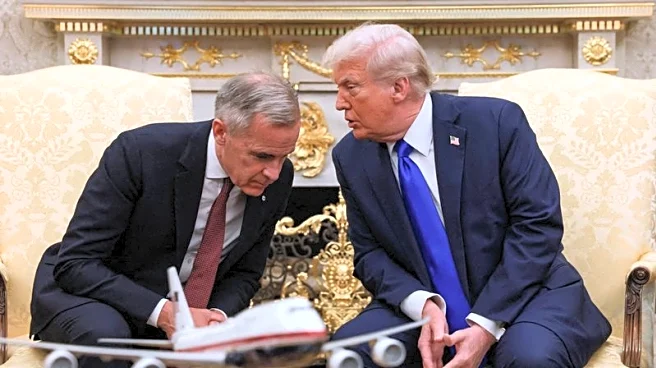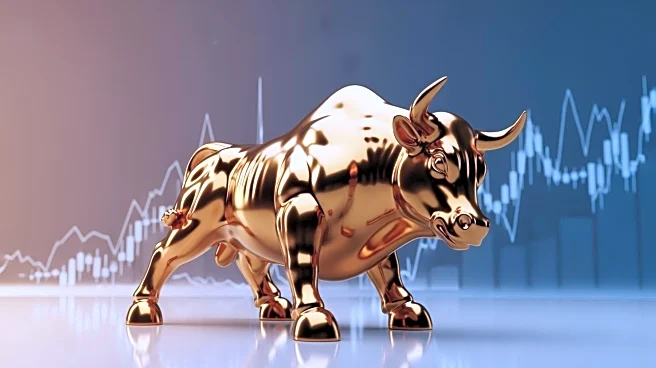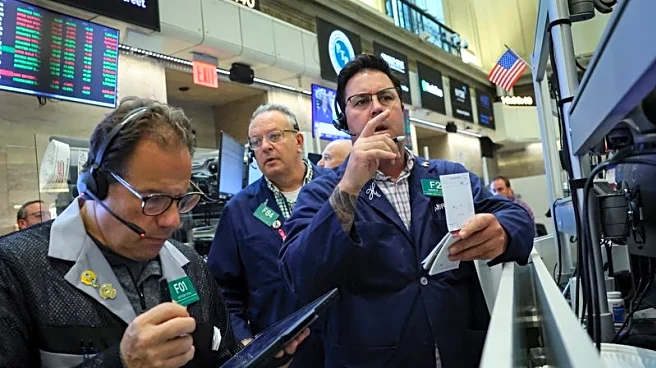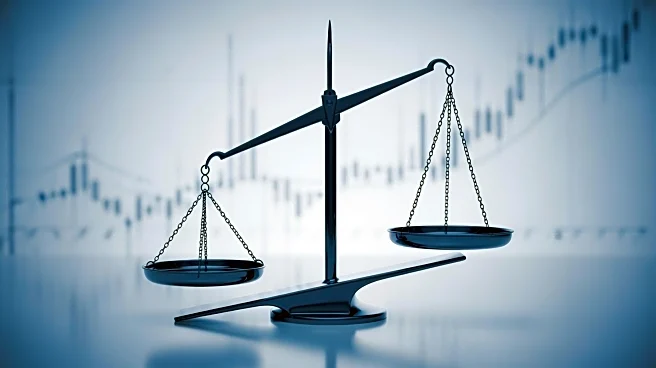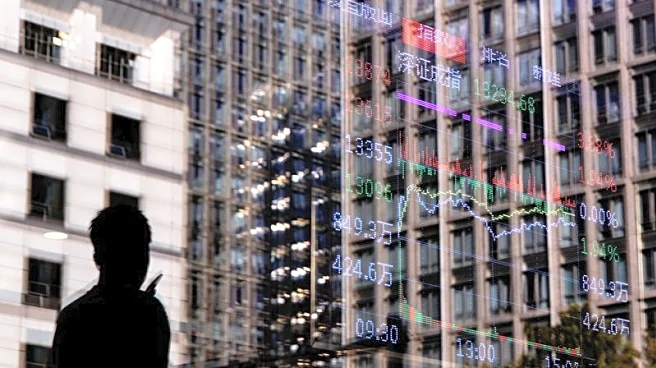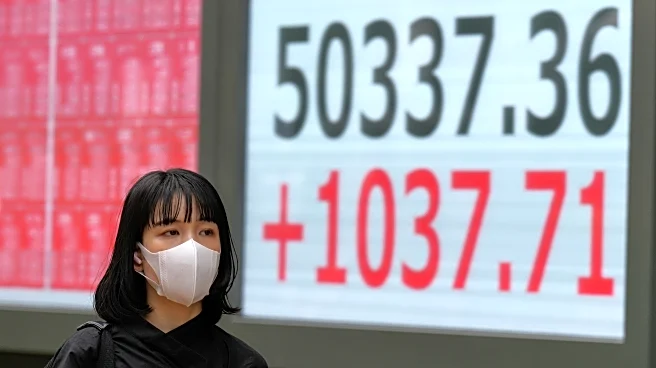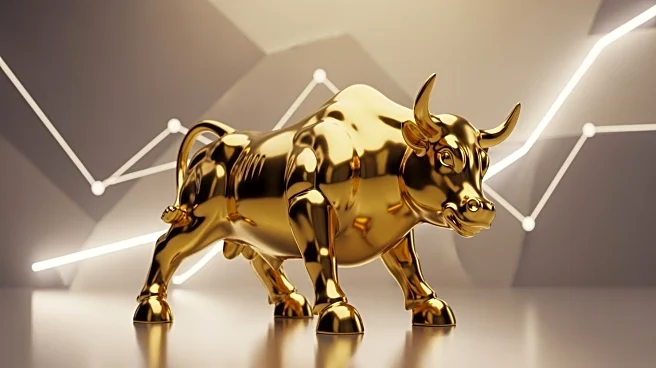What's Happening?
Gold prices fell nearly 2% as optimism surrounding a potential trade deal between the U.S. and China increased risk appetite for equities. Spot gold was down 1.3% at $4,059.22 per ounce, while U.S. gold futures for December delivery lost 1.6% to $4,072.40.
This decline follows a record high of $4,381.21 on October 20, driven by expectations of U.S. rate cuts and geopolitical uncertainties. The market is also anticipating major central bank meetings this week, including a potential rate cut by the Federal Reserve. Asian stocks surged as signs of easing trade tensions between the U.S. and China boosted investor confidence.
Why It's Important?
The decline in gold prices reflects a shift in investor sentiment towards riskier assets, driven by hopes of a resolution in U.S.-China trade tensions. A potential trade deal could lead to lower tariffs, which may allow the Federal Reserve to cut interest rates further, impacting the demand for non-yielding assets like gold. The anticipated rate cut by the Fed is expected to support gold demand in a low-interest-rate environment. This development is significant for investors and industries reliant on precious metals, as it may influence market dynamics and investment strategies.
What's Next?
The Federal Reserve is expected to announce a rate cut of 25 basis points on Wednesday, with markets closely watching for any forward-looking remarks from Fed Chair Jerome Powell. The outcome of the U.S.-China trade discussions, particularly the meeting between President Trump and Chinese President Xi Jinping, will be crucial in determining future market trends. Investors will be monitoring these events to gauge the impact on global economic conditions and asset valuations.
Beyond the Headlines
The potential trade deal and subsequent rate cuts could have broader implications for global economic stability and trade relations. A successful agreement may ease geopolitical tensions and foster a more favorable environment for international trade, benefiting various sectors. However, the long-term effects on currency valuations and commodity prices remain uncertain, requiring careful analysis by stakeholders.



